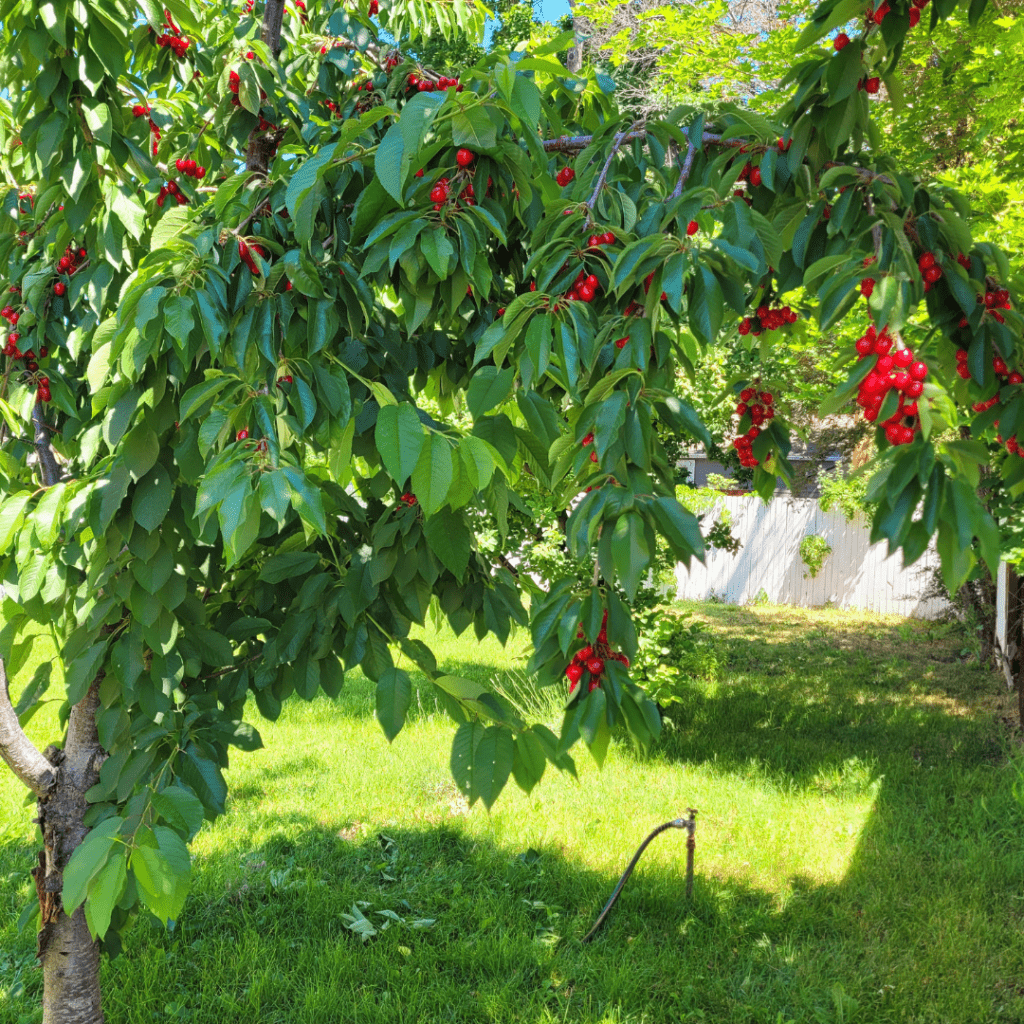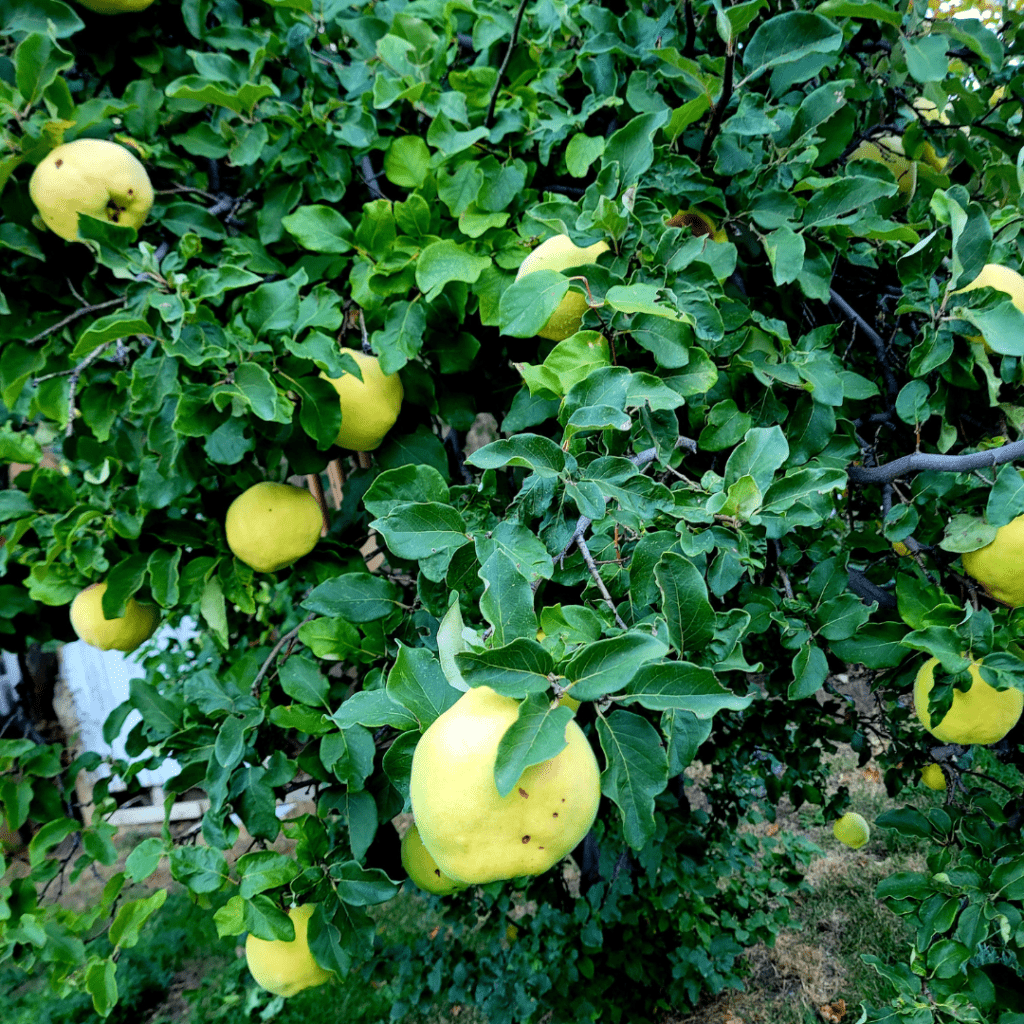Grow a strawberry patch.
What Is Included in This Post:
- Introduction to Perennial Strawberry Patch
- Why Grow Your Own Perennial Strawberry Patch
- Selecting the Right Variety of Perennial Strawberries
- Planning and Preparing the Strawberry Patch
- Planting Perennial Strawberries: Best Practices
- Essential Care and Maintenance for a Productive Patch
- Controlling Pests and Diseases in the Strawberry Patch
- Harvesting and Propagating Perennial Strawberries
- How to Get Free Strawberry Plants From the Runners
- Why Grow a Mixture of Varieties in Your Strawberry Patch
- Fun Facts About Strawberries
- Troubleshooting Common Issues in Perennial Strawberry Patches
- Conclusion
- Frequently Asked Questions
Perennial strawberries are a delightful and rewarding addition to any garden. Unlike their annual counterparts, perennial strawberries provide year after year of luscious, sweet berries without having to replant. With proper care and maintenance, you can establish a productive perennial strawberry patch that will continue to thrive and produce bountiful harvests for many seasons to come. In this article, I will explore the essential steps and techniques to grow a thriving perennial strawberry patch, from selecting the right varieties to harvesting and propagating your strawberries. Whether you are a seasoned gardener or a beginner, this guide will provide you with valuable insights and practical tips to help you create a flourishing strawberry patch that will bring joy and abundance to your home garden.
This is a pinnable post. Tap or hover over any image in this post to pin to your Pinterest Boards.

Introduction to Perennial Strawberry Patch
Perennial strawberry patches are like a gift that keeps on giving. Unlike their annual counterparts, perennial strawberries come back year after year, making them a fantastic investment for any aspiring gardener. But before you embark on this fruity adventure, let’s take a moment to understand why growing perennial strawberries is so darn beneficial and explore the wide variety of options available to satisfy your strawberry cravings.
Understanding the Benefits of Growing Perennial Strawberries
The beauty of perennial strawberries lies in their ability to produce delicious fruits for multiple years without you having to constantly replant them. That means less effort and more strawberry goodness in the long run. Plus, they tend to be hardier, disease-resistant and have larger fruits than their annual counterparts. So, if you’re in it for the long haul, perennial strawberries are definitely the way to go.
Exploring Different Varieties of Perennial Strawberries
When it comes to perennial strawberries, the world is your oyster, or should we say, your strawberry patch? There’s a wide range of varieties to choose from, each with its own unique taste, size, and growth habit. Whether you prefer small and sweet alpine strawberries or the hearty and juicy June-bearing varieties, there’s bound to be a perennial strawberry that suits your fancy. So, let’s dive in and discover the flavorful world of perennial strawberries.
Why Grow Your Own Perennial Strawberry Patch
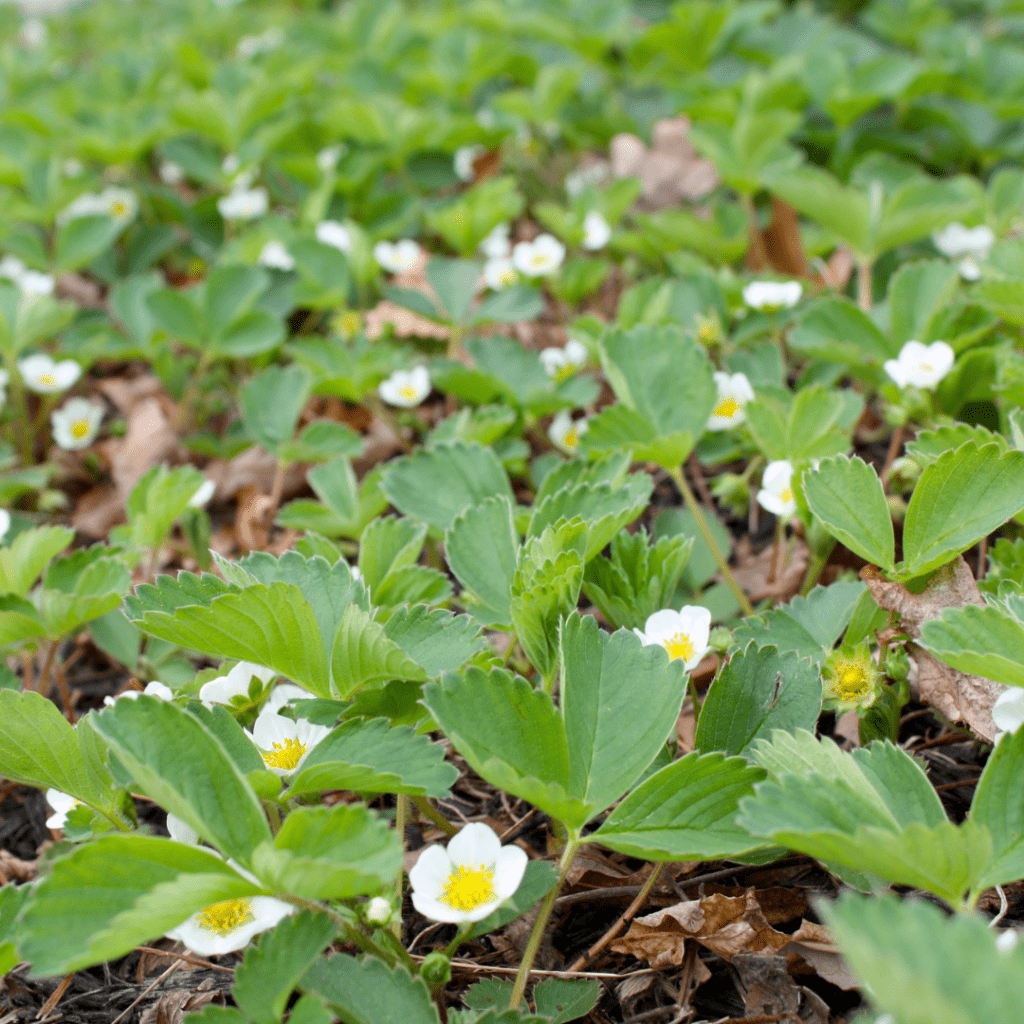
Fresh strawberries are pricy in the grocery store. It is simple enough to grow them yourself to avoid paying the high price of fresh strawberries. Furthermore, those commercial varieties that you pay high prices for are very watery and a bit bland when compared to the sweet juicy sun-ripened home-grown strawberries.
When you grow your own productive perennial strawberry patch in your own backyard, you get to enjoy free tasty strawberries for decades! When you grow strawberries with the method discussed in this post, you will be enjoying strawberries every summer indefinitely. You will have enough strawberries to snack on, use in daily salads, and even can a ton of strawberry jams and pie fillings. You will also be able to give your prized strawberry home canned goods away as perfect gifts to friends and family.
The best thing about growing your own strawberries is that they spread and reproduce naturally giving you more free strawberries! They come back every year and produce more runners and strawberries all over again. Let’s discuss further how you get free strawberry plants with runners.
Selecting the Right Variety of Perennial Strawberries
Now that you know the perks of growing perennial strawberries, it’s time to pick the perfect variety for your patch. But hold your horses, there are a few factors to consider before making your selection.
Considerations for Climate and Growing Conditions
Perennial strawberries, like any other plant, have their climate preferences. Some varieties thrive in cooler regions, while others can handle the heat like champs. Before you make your decision, take a moment to research which varieties are best suited for your local climate and growing conditions. No one wants a strawberry meltdown in their patch!
Popular Perennial Strawberry Varieties to Choose From
Now comes the fun part – choosing the specific variety of perennial strawberries that will grace your patch. From classic favorites like ‘Eversweet’ and ‘Seascape’ to more peculiar options like ‘Purple Wonder’ and ‘White Delight,’ there’s a world of flavors awaiting you. Just remember to consider factors like taste, size, and growth habits when making your final decision. After all, you want these berries to be a hit, not a miss!
Planning and Preparing the Strawberry Patch
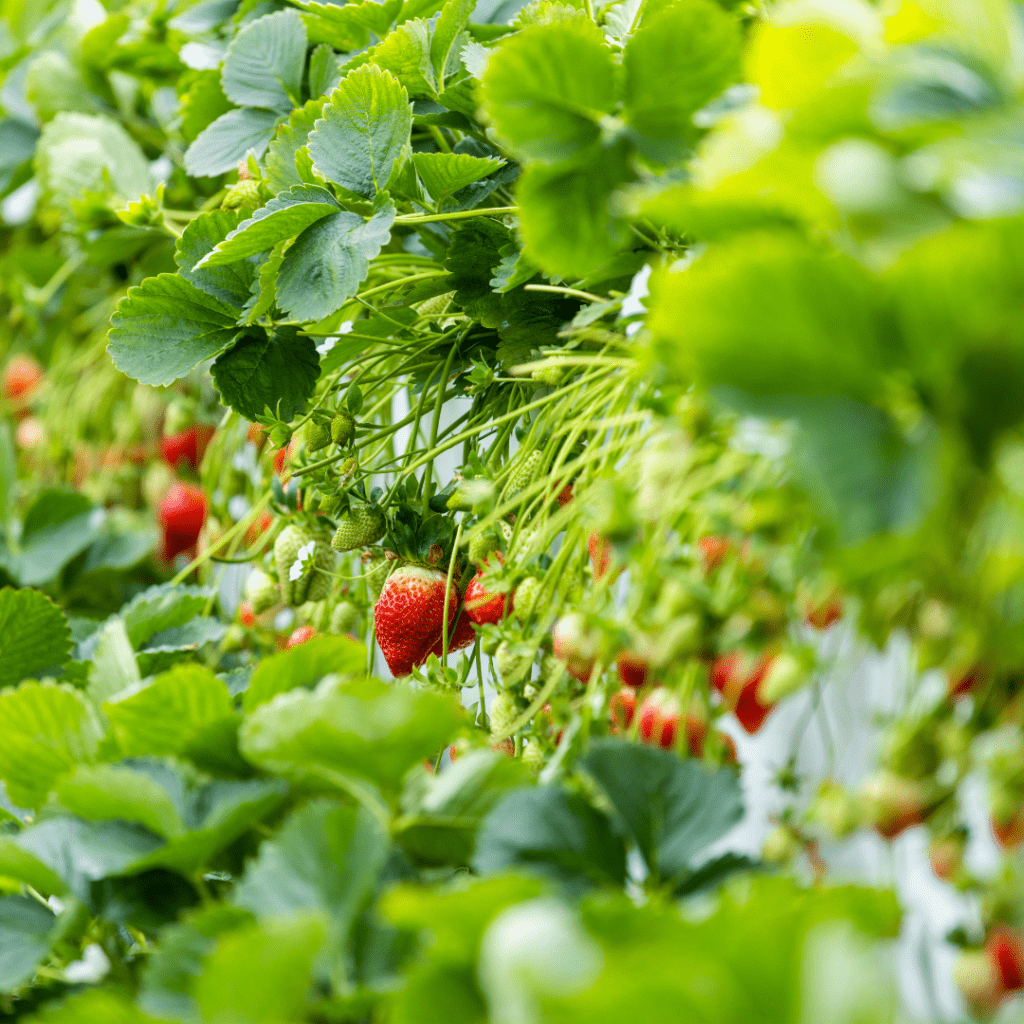
With your perennial strawberry variety in mind, it’s time to plan and prepare the stage for their grand entrance. Let’s make sure your strawberry patch gets the royal treatment it deserves!
Choosing the Ideal Location for Your Strawberry Patch
Just like real estate, location is everything when it comes to a successful strawberry patch. Perennial strawberries thrive in full sun, so find a spot in your garden that basks in sunlight for at least six hours a day. Also, make sure the location has good drainage to prevent your strawberries from getting soggy feet. Nobody likes soggy feet, not even strawberries!
Preparing the Soil for Planting Perennial Strawberries
Strawberries may be sweet, but they’re not too picky when it comes to soil. However, giving them a little love and attention will go a long way. Prepare the soil by removing any weeds, rocks, or debris. Loosen it up with a garden fork and mix in some compost or well-rotted manure for good measure. This will create a fertile and fluffy home for your perennial strawberries, making them feel like they’re living in strawberry paradise.
Planting Perennial Strawberries: Best Practices
The time has finally come to get your hands dirty and plant those perennial strawberries. But wait, before you do, let’s go over some best practices to ensure your strawberry patch thrives.
Optimal Time for Planting Perennial Strawberries
Timing is everything when it comes to planting strawberries. It’s best to plant them in early spring or late summer when the soil is warm and ready for action. This gives the roots a chance to establish themselves before the harsh weather hits. So, make sure to mark your calendar and seize the strawberry planting season!
Proper Spacing and Arrangement of Strawberry Plants
Strawberries may be tiny, but they need their personal space too. When planting your perennial strawberries, make sure to space them about 12 to 18 inches apart. This gives each plant enough room to spread its delicious wings and prevents overcrowding, which can lead to disease and fruit rot. Plus, an organized and well-spaced strawberry patch just looks darn good!
Essential Care and Maintenance for a Productive Patch

Watering and Irrigation Techniques
Keeping your perennial strawberry patch well-watered is crucial for its productivity. These thirsty little plants need a consistent supply of moisture to thrive. Remember, strawberries are like your needy friend who always wants attention, except instead of attention, they want water. So, make sure to water them regularly, especially during dry spells or heatwaves. Aim for about 1-2 inches of water per week, either through rainfall or irrigation, but just avoid drowning them. Also, try to water them at the base of the plants, rather than spraying their leaves, as strawberries don’t enjoy a refreshing shower like you do.
Fertilizing and Mulching Perennial Strawberries
Give your perennial strawberries the VIP treatment they deserve by feeding them with some fertilizer. They may not have red carpets, but they’ll appreciate the nutrients. Before the growing season begins, offer them a balanced organic fertilizer, following the instructions on the package. Be sure not to overdo it though, as strawberries have sensitive tummies and excessive fertilization can lead to leaf burn. Additionally, mulching your patch with a layer of straw or pine needles will help suppress weeds and maintain soil moisture, like a cozy blanket for your strawberry babies.
Pruning and Training Strawberry Plants
Pruning and training your strawberry plants is essential to keep them in line. Remove any dead or damaged leaves to avoid disease spread and enhance air circulation in the patch. Also, don’t forget to pinch off any runners that pop up. These adventurous shoots may look cute, but they divert energy from fruit production. Think of them as the freeloaders crashing your strawberry party. Finally, if your plants start looking like they’re competing in a jungle marathon, thin them out by removing excess runners and crowns. Your strawberries will appreciate the extra breathing room.
Controlling Pests and Diseases in the Strawberry Patch
Common Pests Affecting Perennial Strawberries
Unfortunately, strawberries are not immune to annoying pests. Some of their uninvited guests include slugs, snails, aphids, and the infamous strawberry-loving birds. To keep these little rascals at bay, you can employ various tactics. Use organic slug repellents like coffee grounds or eggshells to deter slugs and snails. For aphids, you can introduce friendly predators like ladybugs or blast them off with a strong stream of water. To protect your precious berries from being winged away by birds, you can cover the patch with bird netting. Just make sure the birds aren’t plotting their revenge while you’re not watching.
Besides, I have something even better for the friendly birds in your area. I have dedicated a whole category just for the feathery friends of the air with ideas for fun bird feeders and bird bath gardens for them to enjoy if you want to deter them from your precious strawberry patch. Be sure to check out the informative posts at the links below.
- How to Make Your Own DIY Bird Nesting Balls
- How to Make a Bird Feeder Obelisk Garden
- Top 5 Affordable Bird Feeder Cameras Under $100
Identifying and Treating Strawberry Plant Diseases
Strawberries, like humans, can also get sick. They can suffer from fungal diseases such as gray mold or powdery mildew, or bacterial diseases like crown rot. If you notice any discolored or wilting leaves, unusual spots, or rotting fruit, it’s time to take action. Remove any infected plants or fruits promptly to prevent the spread of disease. To combat fungal infections, use copper-based fungicides or organic alternatives like neem oil. For bacterial diseases, sadly, there’s no cure, so prevention is key. Plant your strawberries in well-draining soil, provide adequate air circulation, and avoid overcrowding to minimize the risk of these nasty diseases.
Harvesting and Propagating Perennial Strawberries
Knowing When and How to Harvest Perennial Strawberries
Finally, the long-awaited moment arrives when you get to enjoy the fruits of your labor (quite literally). Harvesting strawberries at the right time ensures optimal flavor and juiciness. Wait until the berries are fully red, firm, and slightly shiny before picking them. If you have to tug or pry them off, they’re not quite ready yet. Gently hold the stem just above the berry and twist. And remember, if you can resist the temptation to devour them all right away, fresh strawberries taste even better when shared.
Methods for Propagating Strawberry Plants for Expansion
If you’re thinking of expanding your strawberry empire or want to share your fruitful bounty with others, propagating strawberry plants is the way to go. One of the easiest methods is using the plant’s runners. Allow these shoots to root in a pot of soil or a nursery bed, and once they establish themselves, you can transplant them to a new area. Another option is dividing the plants. Dig up the clumps, separate them into smaller sections, and replant them. It’s like giving your strawberries their own personal space, and they’ll thank you for it by producing even more delicious berries.
How to Get Free Strawberry Plants From the Runners
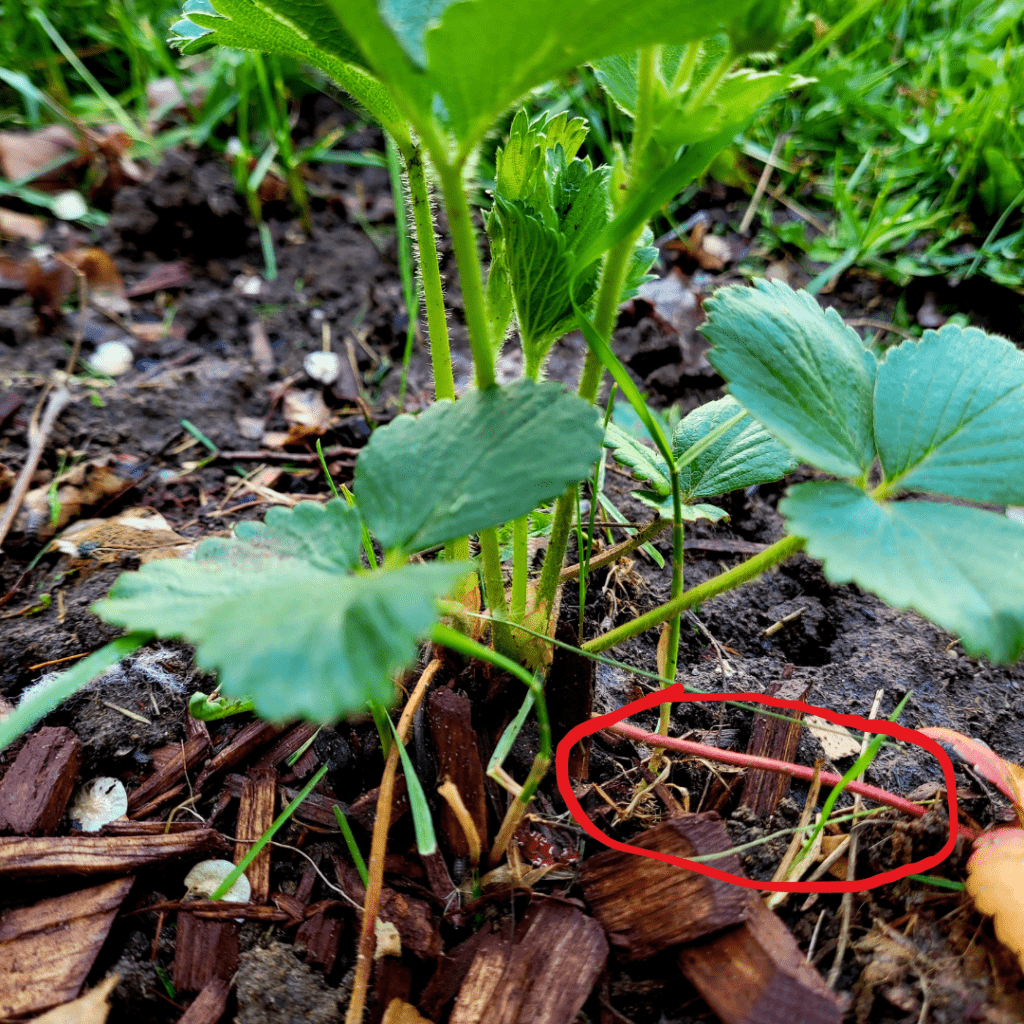
In the photo above, you can see I have circled a strawberry plant runner from this young strawberry plant that is only two years old and is already producing its first runner. I recently transplanted this plant so it has some slight signs of shock, but it will recover well.
Since strawberries propagate themselves, you get a ton of free strawberry plants indefinitely. You could either allow them to spread out in their growing patch, plant them elsewhere, start a strawberry tower, or give the new plants to friends and family.
The strawberry runners will shoot out on all sides of a strawberry plant, venture out a bit, grow a node, and plant themselves in the surrounding soil. They will then grow into a new strawberry plant that will eventually shoot out its own runners. This is how they spread in their strawberry patch!
You will save a ton of money when growing your own strawberry patch since they propagate themselves and can provide a bumper crop! Since strawberries clone themselves, you should only have to buy them once, plant them, and harvest free strawberries forever.
Let’s talk more about why and how growing the two different types of strawberry plants yields a bumper crop for canning and endless fresh extra strawberries for daily snacking all summer long.
Why Grow a Mixture of Varieties in Your Strawberry Patch
When you grow a mixture of June-bearing and ever-bearing strawberries in your strawberry patch, you increase your yield dramatically. To harvest and can strawberries all season long, you want to grow both of these varieties in your garden, and here is why.
June-Bearing Strawberries
June-bearing strawberries produce a high-yield crop all at once early in the season. You can get a ton of strawberries to begin canning them into jams or pie fillings. You can expect about one to two quarts or two to four pints of strawberries per plant.
- Allstar.
- Annapolis.
- Chandler.
- Delmarvel.
- Douglas.
- Earligrow.
- Honeoye.
- Jewel.
- Kent.
- Mojave.
- Seascape.
- Sequoia.
Ever-Bearing Strawberries
Ever-bearing strawberries will produce a slightly smaller harvest over the entire season. After you have harvested your bumper crop of June-bearing strawberries, you can expect to continue to harvest strawberries all summer from your ever-bearing strawberries. These are the perfect ones to harvest daily and add to salads, recipes, or just fun snacking!
- Alboione.
- Alpine.
- Eversweet.
- Festival.
- Ozark Beauty.
- Seascape.
- Quinalt.
Fun Facts About Strawberries
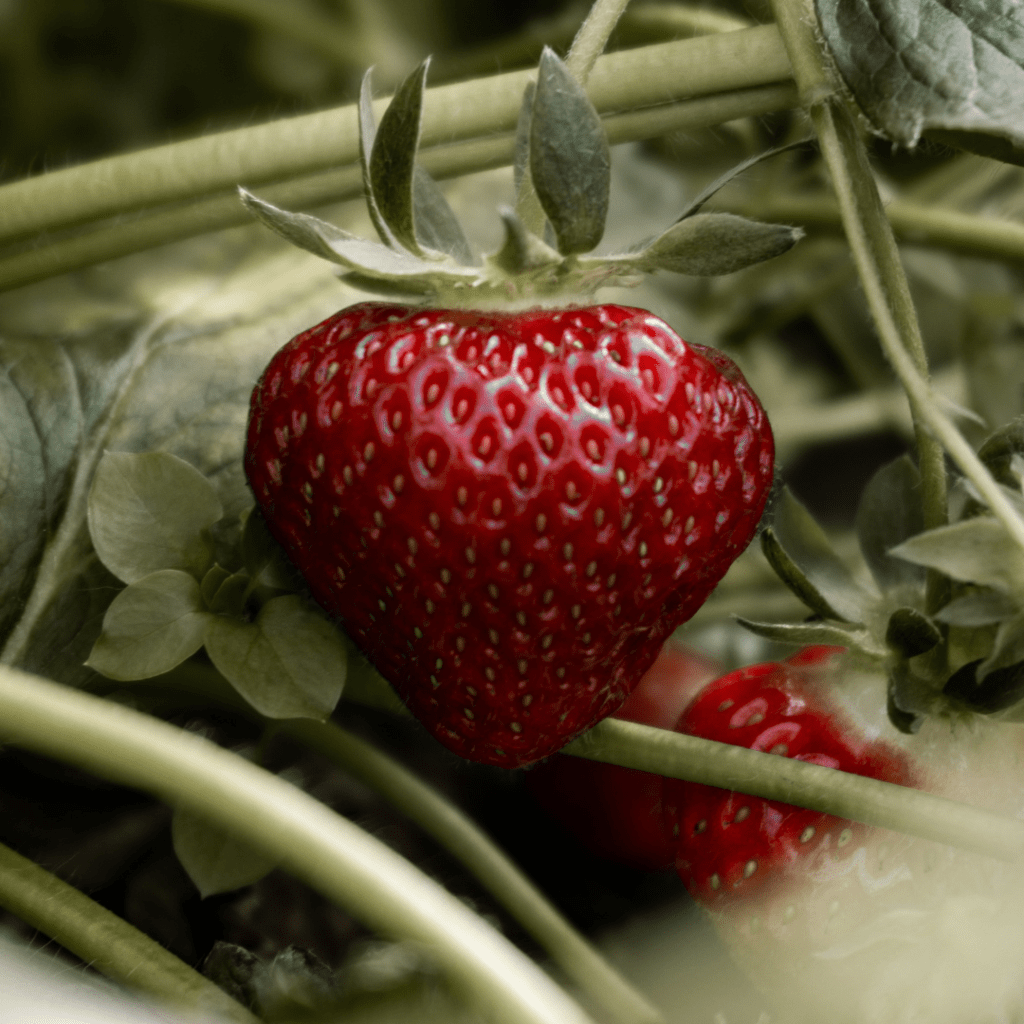
- Strawberries get their name because they are grown with straw to help keep the strawberries out of the soil and safely nestled on the straw. They are also over-wintered in the straw to protect them from freezing temperatures while they are dormant.
- Strawberries can be a variety of colors other than red from white to pink!
- Strawberries are the only fruit that wears their seeds on the outside.
- Strawberries are the first fruit to ripen in the spring.
- You can grow a new strawberry plant via runners or by planting the whole fruit in the ground!
Troubleshooting Common Issues in Perennial Strawberry Patches
Dealing with Yellowing Leaves and Nutrient Deficiencies
If your strawberry patch starts resembling a yellow submarine, it’s a sign that something’s amiss. Yellowing leaves often indicate nutrient deficiencies or soil pH imbalance. To address this, you can test your soil and adjust the pH accordingly. Additionally, providing a balanced fertilizer rich in nitrogen, phosphorus, and potassium will help nurture your plants back to their vibrant green selves. Just be careful not to overfeed them, as you don’t want your strawberries growing into pudgy couch potatoes.
Addressing Wilting or Stunted Growth in Strawberry Plants
If your strawberries appear to be having a midlife crisis with wilting or stunted growth, don’t panic. This could be due to several reasons, such as overwatering, under-watering, or poor soil drainage. Check that you’re watering consistently, without drowning the plants, and ensure the soil has good drainage. Adjusting irrigation practices and improving soil structure with organic amendments can usually solve the problem. Just remember, even strawberries have their off days, so give them some time to recover and regain their pep.
Conclusion
In conclusion, growing a productive perennial strawberry patch is a rewarding endeavor that can provide you with an abundance of delicious berries year after year. By selecting the right varieties, planning and preparing the patch, and implementing proper care and maintenance practices, you can ensure the health and productivity of your strawberry plants. With the knowledge and techniques shared in this article, you are equipped to create a thriving perennial strawberry patch that will bring beauty, flavor, and joy to your garden for seasons to come. So go ahead, get your hands dirty, and enjoy the sweet fruits of your labor!
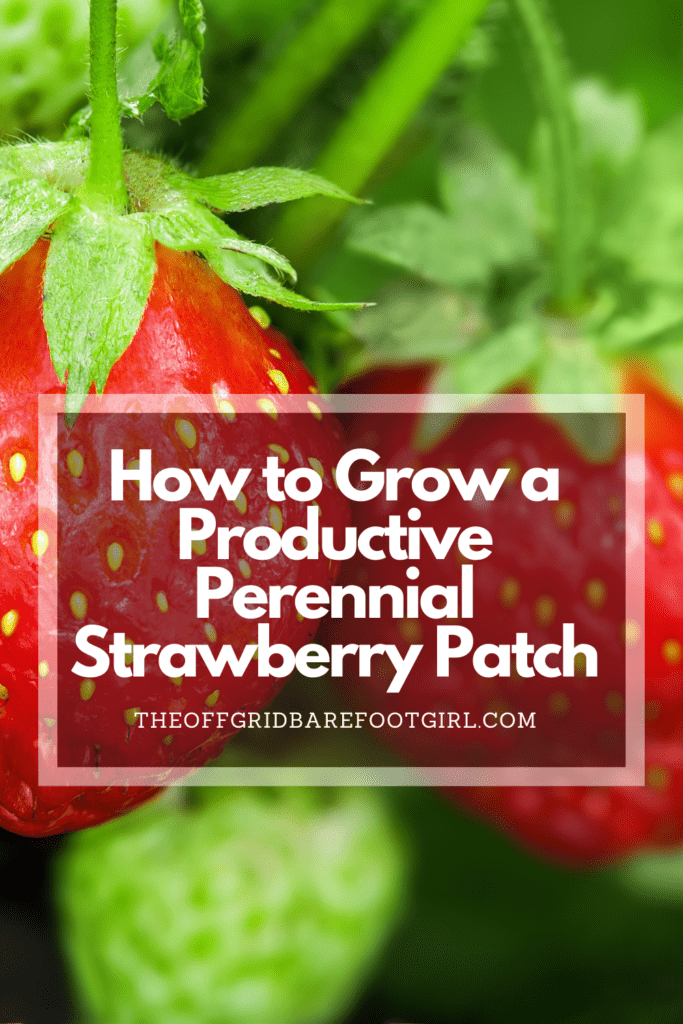
Frequently Asked Questions
1. Can perennial strawberries survive in all climates?
While perennial strawberries are adaptable to various climates, some varieties thrive better in specific regions. It’s important to select strawberry varieties that are suitable for your climate and growing conditions. Consult with local gardening experts or nurseries to determine the best varieties for your area.
2. How often should I water my perennial strawberry patch?
Perennial strawberries require consistent moisture, especially during the fruiting season. Aim to provide approximately 1-2 inches of water per week, either through rainfall or irrigation. However, be cautious not to overwater, as it can lead to root rot. Regularly monitor the moisture levels of the soil to strike a balance.
3. Can I grow perennial strawberries in containers or pots?
Yes, perennial strawberries can be grown in containers or pots, making them a versatile option for those with limited space or wanting to prevent spreading. Choose a container with proper drainage, use a well-draining potting mix, and ensure the plants receive adequate sunlight and care. Regular fertilization may be necessary due to the limited soil volume.
4. How long before I can harvest strawberries from a perennial patch?
The time it takes for strawberries to mature and be ready for harvest depends on the variety and growing conditions. Generally, perennial strawberries start producing fruit within the second or third year after planting. However, it’s important to allow the plants to establish strong roots in the first year without harvesting any berries. Patience and proper care will reward you with a plentiful harvest in the subsequent years.
Summary
I hope I have inspired you to grow your own productive perennial strawberry patch.
If you were encouraged by this post, I invite you to check out my FREE Printables Page for fun free printables, planners, and charts.
ENTER MY FREE Printables Page HERE
I invite you to check out some more of my posts!
Quince Trees: All About Quince Trees: Ultimate Guide
Cherry Trees: All About Cherry Trees: Ultimate Guide
Pear Trees: All About Pear Trees: Ultimate Guide
Blessings,
The Off Grid Barefoot Girl



